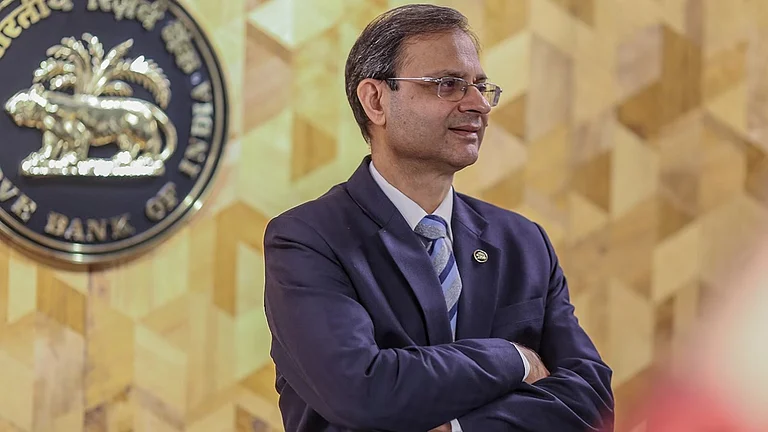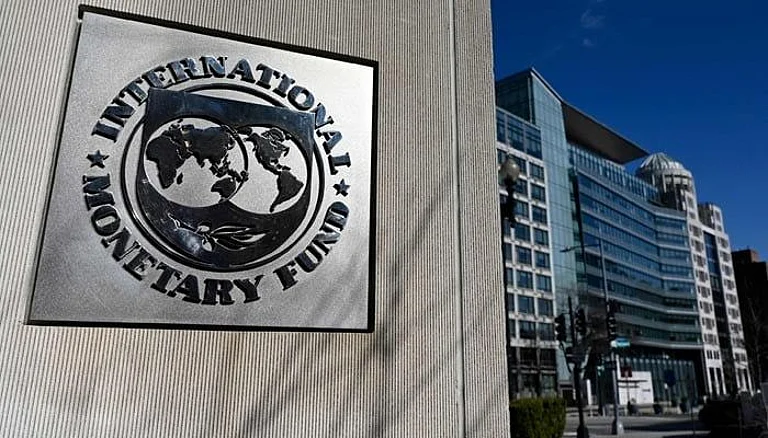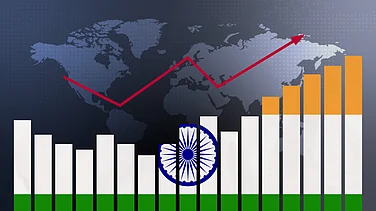India’s central bank, the Reserve Bank of India (RBI), commemorated its 90th birth anniversary recently. Conceived in the final years of the British Raj in India, the institution has been an integral part of India’s growth story and has often caught itself in a balancing act and crossfire between fiscal populism and monetary prudence.
This is a particularly difficult time for any central bank. With Trump tariffs wreaking havoc in global financial markets, central banks are bracing against a series of economic shocks that may be triggered by increased volatility and heightened economic uncertainty. The RBI has managed crises reasonably well in the past, especially in terms of monetary policy response but some may argue the current nature of crisis may or may not go outside the scope of a toolkit monetary policy response, warranting fiscal policy and other policy interventions.
Notwithstanding that, it is particularly critical now to look into the past and observe the evolution of an institution whose principal responsibility has been to ensure credit and money supply is maintained and balanced for a progressive growth trajectory in the Indian economy, while maintaining a robust relationship with the government.
In the Past
Over 90 years, it’s an institution which has battled the needs of institutional autonomy (keeping distance from the government) while supporting the government’s economic plan and agenda. If the 1930s and 1940s saw the RBI as a passive agent of British monetary policy, the post-Independence decades converted it into a quasi-fiscal arm of the state. From a colonial outpost to a modern inflation-targeting institution, the central bank’s evolution has been anything but linear.
The 1991 reforms liberated the institution in theory but in practice political demands have repeatedly tested the limits of its central banking independence. It becomes critical to go deeper into its institution history to know more about India’s most vital financial institution.
The RBI was born in 1935, not as a sovereign monetary authority but as a custodian of British financial interests in India. Its establishment followed the recommendations of the Hilton Young Commission (1926) which sought to create a central bank modelled after the Bank of England.
However, unlike its British counterpart, the RBI had no real control over monetary policy, rather it was pegged to the pound-sterling which meant that India’s monetary conditions were dictated by London with the central bank functioning primarily as a currency regulator rather than an economic stabiliser.
The period from 1925 to 1935 therefore provided a textbook case of monetary subordination. British policy dictated high interest rates to maintain external capital flows which resulted in severe deflationary pressures.
The RBI’s primary function during this period was to ensure India’s currency reserves remained sufficient to back the exchange rate, rather than managing domestic economic stability. Even as Indian industries struggled with liquidity shortages, the central bank’s hands were tied. This era illustrated a recurring theme in the RBI’s history wherein external constraints have often defined its operational limits.
With Independence, the RBI’s role expanded dramatically but not necessarily in ways that promoted monetary stability. The nationalisation of the bank in 1949 marked the beginning of a period where central banking was synonymous with state-directed credit allocation. Under Nehru’s planned economic model, the RBI was tasked with financing industrialisation which came at the cost of inflation control.
The 1960s and 1970s too saw a dramatic rise in fiscal deficits where the RBI was compelled to accommodate government borrowing through automatic monetisation. By the early 1980s, fiscal deficits had reached 8.13% of GDP with inflationary consequences that would later force structural reforms.
The nationalisation of 14 banks in 1969 was a move designed to expand financial inclusion which also had the unintended effect of increasing political interference in monetary policy. The RBI found itself frequently overruled by government directives, especially in interest rate policies and credit distribution, which led them to curb liquidity growth but political resistance limited its effectiveness.
This era established another long-term pattern: while the RBI has always been tasked with price stability, political imperatives forced it to prioritise growth, sometimes at the cost of macroeconomic stability. The troubled, divorced link between monetary and fiscal policy, as evident in many central banking institutional functioning at the time (across the globe), also affected the RBI.
The balance of payments crisis in 1991 forced a radical rethinking of India's economic policies.
The 1991 economic crisis forced India to seek an International Monetary Fund (IMF) bailout, triggering structural reforms that reshaped the RBI’s role. The rupee was devalued twice by 9% on July 1 and 11% on July 3 to boost exports and ease the foreign exchange shortage. The RBI deregulated interest rates and shifted toward market-driven monetary policies, reducing government control.
Post-reforms, inflation dropped from over 13% in 1991 to under 7.5% by 1997, reflecting RBI’s stronger monetary discipline. The bank also adopted a more flexible exchange rate and phased out direct credit controls, fostering financial sector growth.
A major milestone came in 2016 with the creation of the Monetary Policy Committee (MPC), setting an explicit inflation target of 4% ± 2%. This move reinforced RBI’s autonomy, minimising government interference in monetary policy. The 1991 reforms transformed RBI from a passive regulator into a proactive monetary authority, ensuring macroeconomic stability and sustained growth.
Historically, the RBI employed cash reserve ratio (CRR) and statutory liquidity ratio (SLR) to regulate liquidity and ensure financial stability. However, these tools have limitations, especially in their immediate impact on the economy. In contrast, the repo rate and open market operations (OMO) offer more direct and flexible means to influence short-term interest rates and liquidity conditions.
During the Covid-19 pandemic, the RBI prioritised tools that could provide swift economic relief. The MPC convened ahead of schedule in March 2020 and implemented a series of repo rate cuts, reducing it from 5.15% to 4.40% over the year. This aggressive easing aimed to mitigate the pandemic's economic impact by lowering borrowing costs and encouraging lending
From the 2008 Global Financial Meltdown to the economic shockwaves of Covid-19, the RBI has had to move beyond its traditional role. Once seen as a mere inflation-controlling machine, it is now an institution that pre-emptively manages liquidity, executes targeted credit interventions and even plays a subtle role in fiscal management, all while keeping financial stability intact.
Rewind to 2008
The North Atlantic Financial Crisis (NAFC) sent shockwaves across the global economy, with collapsing banks and crashing stock markets. The RBI responded effectively but predictably, with a mix of interest rate cuts and liquidity injections. It played the role of a traditional central bank, ensuring that markets functioned but staying within its well-defined boundaries. In contrast, Covid-19 forced the institution into an unprecedented leadership role, unleashing more policy actions than any other Emerging Market Economy (EME) central bank.
The pandemic triggered a seismic change in the RBI’s policy tools. The rapid reduction of the repo rate from 5.15% to 4.0% in two moves which was unheard during the pre-pandemic times was just the beginning.
The expansion of the monetary policy corridor from 50 bps to 90 bps signified a fundamental shift toward prioritising liquidity. But the most groundbreaking innovation was explicit forward guidance, which was a first in India’s monetary history which assured accommodative policy for as long as economic recovery required. The RBI was no longer merely responding to inflation but proactively engineering economic revival.
Liquidity operations, once constrained to CRR-SLR adjustments, now encompass a sophisticated suite of interventions. It introduced Long-Term Repo Operations (LTROs), allowing banks to access long-duration liquidity at fixed rates, ensuring stable funding sources. This was followed by Targeted Long-Term Repo Operations (TLTROs), designed specifically to channel funds into corporate bond and commercial paper markets, stabilising credit flows to businesses that needed them most.
At a time when financial markets were on edge, the RBI pumped Rs 1.25trn into development finance institutions such as Small Industries Development Bank of India (Sidbi), National Housing Bank (NHB), National Bank for Agriculture and Rural Development (Nabard) and Exim Bank, ensuring that small businesses, housing finance, and exports did not face liquidity shortages.
By March 2021, the RBI had injected a staggering Rs 13.6trn—6.9% of India’s GDP into the economy, ensuring that even as economic activity collapsed, the banking system remained stable (CSEP,2021). Borrowing costs fell, bond markets revived and banks remained resilient despite the massive uncertainty.
Instead of direct deficit financing, which would have violated its inflation-targeting mandate, the RBI expanded Ways and Means Advances (WMA), allowing the central government to borrow Rs 2trn at lower rates, while also raising state borrowing limits by 60% (CSEP,2021).
It conducted massive OMOs, purchasing Rs 3.13trn worth of government securities, nearly 30% of the central government’s net borrowings—without ever admitting to monetising the deficit.
Through "Operation Twist", it executed 19 bond swap operations, lowering long-term yields and improving monetary transmission. The result was extraordinary: government borrowing costs fell to a 16-year low of 5.79% in 2020-21, ensuring that fiscal stimulus could be deployed without triggering a debt crisis.
The RBI has also come a long way since the 2008 crisis. It anchored response and liquidity support during the pandemic and has helped the government borrow excessively over the last six to eight years. Going forward, the biggest challenge for the institution will be unwinding the extraordinary interventions without disrupting financial stability. There is also a credit and liquidity crisis driven by demand and capacity utilisation concerns that requires the institution’s attention, as many public sector banks continue to battle high non-performing assets (NPAs) and debt on their balance sheet.
The RBI must also carefully navigate real negative interest rates, prevent asset bubbles and ensure credit flow normalisation without triggering credit misallocation.
Yet, the central lesson from the past two decades is clear: the RBI is no longer bound by traditional constraints of monetary policy alone. It has redefined the very nature of central banking—embracing flexibility, interventionism and a holistic economic approach while working—in most parts, harmoniously with the Union government of the day.
As global central banks struggle with post-pandemic realities, remaining independent, India’s RBI may well serve as the prototype for the next era of monetary policy: one that is adaptive, proactive and unafraid to rewrite the rulebook. The only question now is: whether it can manage maintaining its own strengths and institutional autonomy that has been behind its relative success in a time of greater internal and external uncertainty and economic volatility? The next few months are critical for the institution in responding to this.
With inputs from Ankur Singh and Geetali
The author is professor of practice and director, Centre for New Economics Studies, Jindal School of Liberal Arts and Humanities, OP Jindal Global University




























